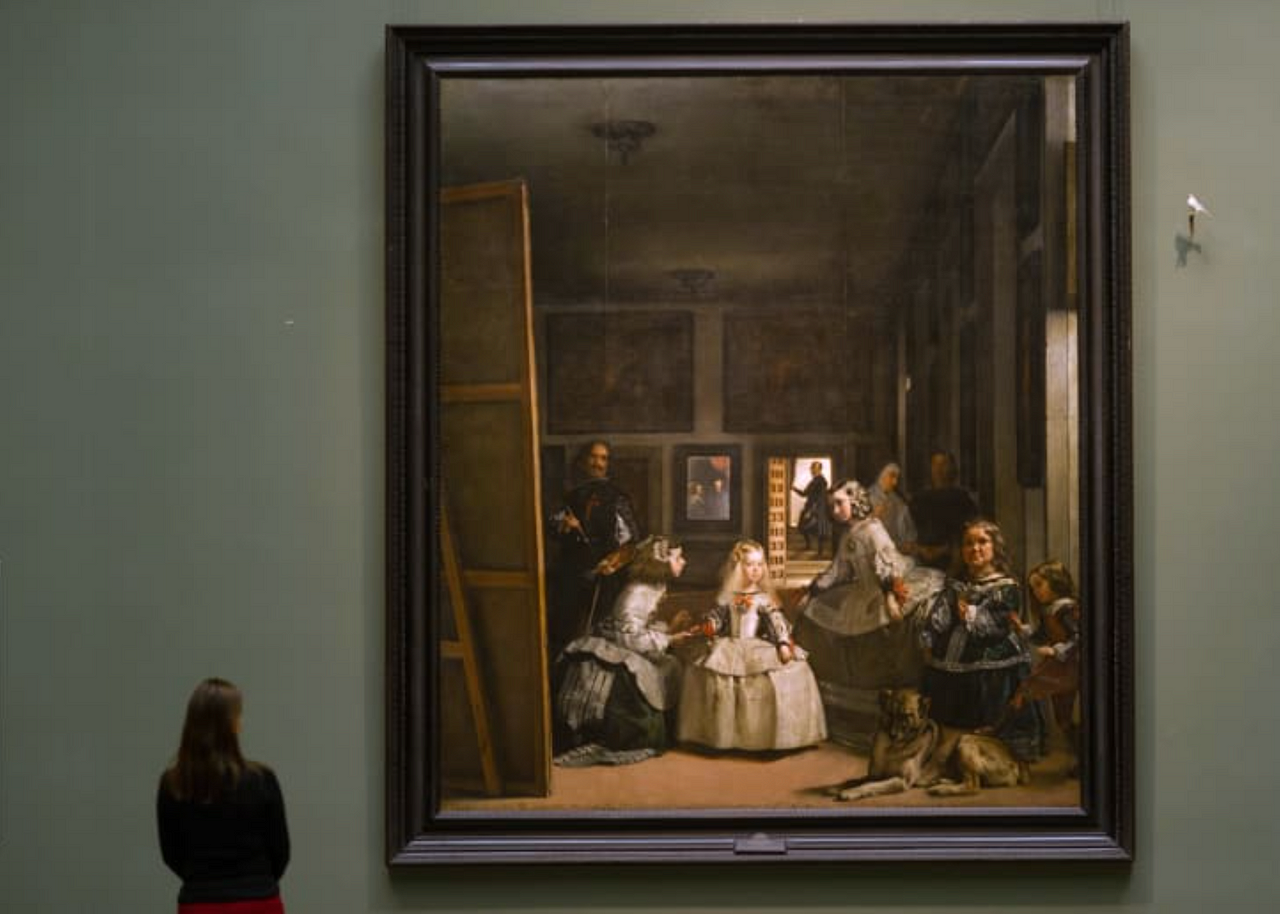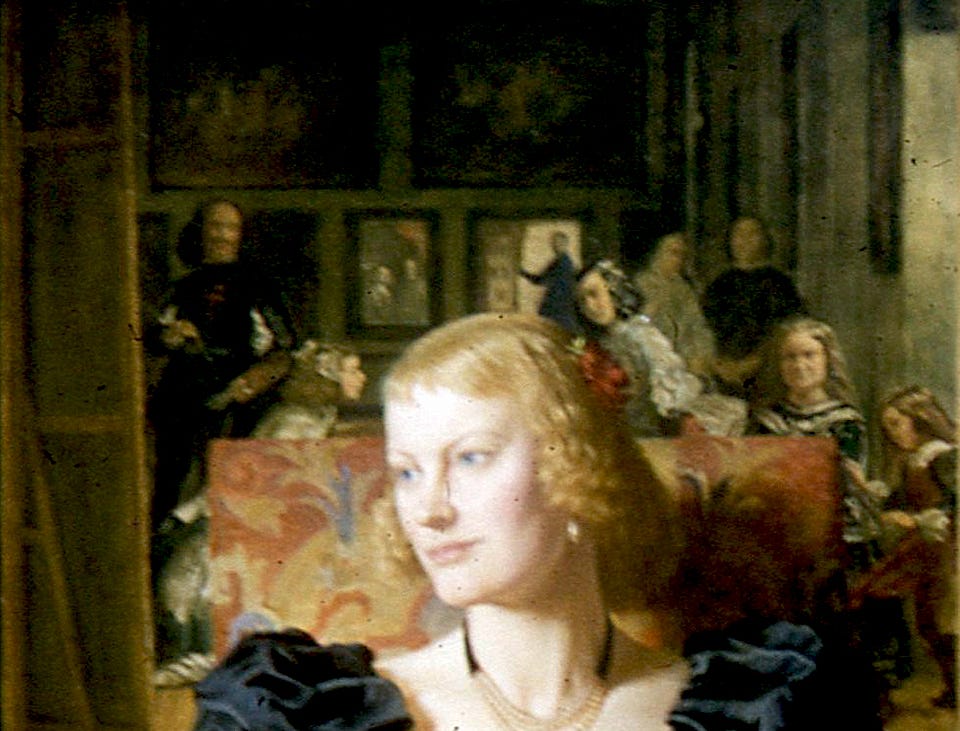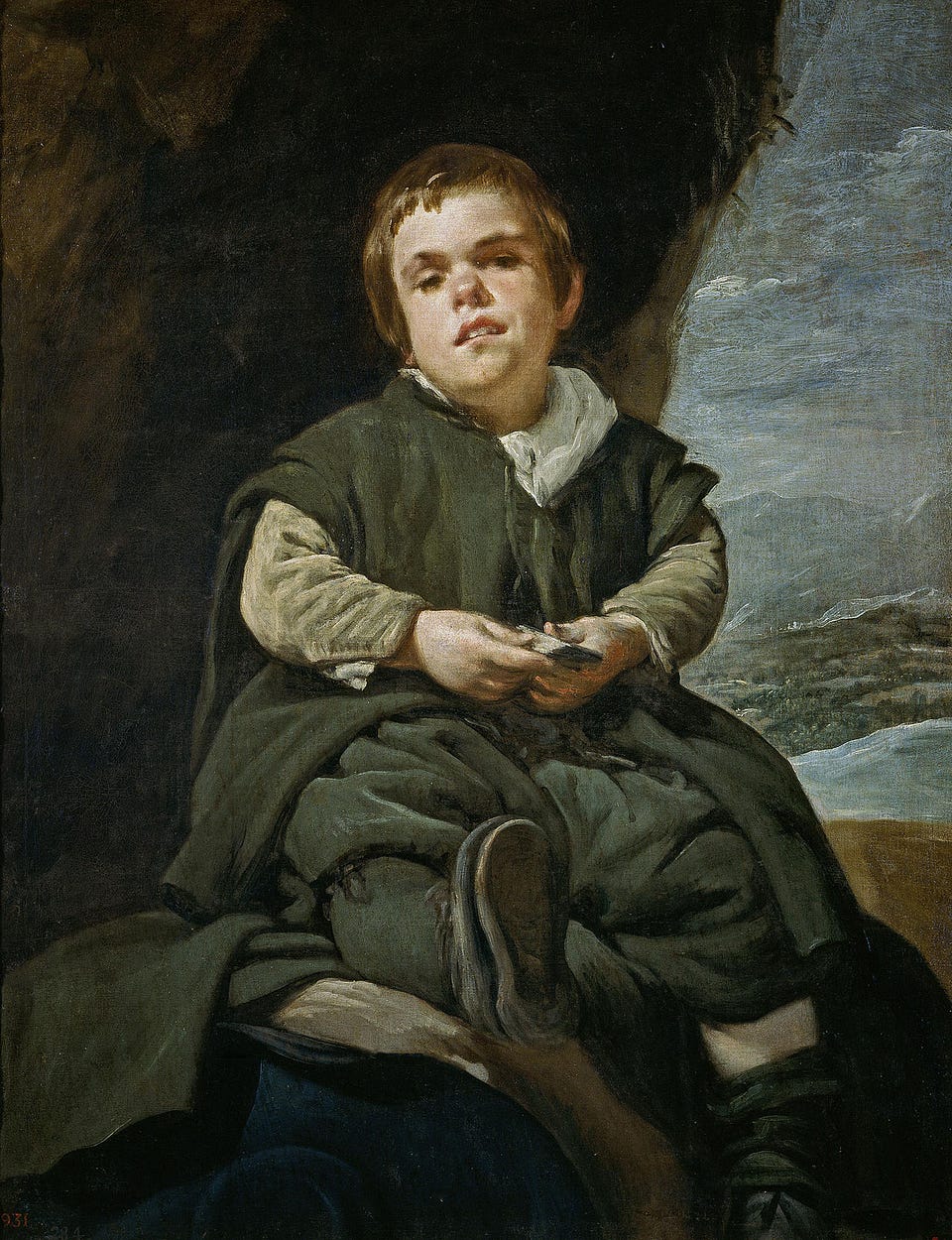In a recent dive into a box of old sketchbooks, I came upon a drawing I had sketched in Madrid on a winter afternoon. I had drawn it in the Prado in a small battered hardbound sketchbook that I had carried around Europe. It was a copy of a Diego Velásquez painting The Boy From Valleas (Portrait of Francisco Lezcano).
I was in the midst a tour of the great museums of Europe, armed with rail pass, sketchbook, and a handful of pencil stubs.
The cold, vast museum was virtually empty. The merry-go-round of tourism, long lines and crowded galleries, had not yet kicked into gear in the early eighties. It was just me and all those magnificent sombre paintings.
As I stood in front of Velásquez’s painting of this dwarf jester in the court of King Philip IV, I sketched intently. I was enchanted with both the painting and the boy in it. Velásquez brought Francisco alive to me through his depiction of an enigmatic, challenging gaze, with a mastery of brush stroke and alchemy of paint.
With my pencil, chiselled to a sharp, broad point, I aimed, through drawing and observing, to appreciate Velasquez’s vision of his subject. Determined to take it in, I sketched entirely with my non-dominant hand, trying to hold on to this portrayal of psychological insight and painterly sophistication.
As I sketched in the tones of graphite, I absorbed the magic and mystery of Velásquez’s use of brush, medium and colour. He brought this subject to life in the setting against a dark curtain and a distant mysterious landscape view. I have since learned that his exact methods are lost to time, like so many of those of the old masters.
I went to Madrid in search of a Velásquez I had known since childhood, venerated by my Grandfather, a painter. He prized Velásquez as the greatest of portrait painters. So much so, that he painted a large scale copy of Velásquez’ masterpiece Las Meninas (also in the Prado). And then painted a full length portrait of my Grandmother seated in front of the copy. That painting won the annual Proctor Prize Award for best portrait painting in North America in the nineteen-thirties. It was an homage to the beauty of my Grandmother and to that of classical art he prized so much.
He had many fixed ideas about art. Focussing more on what kind of painters he didn’t like. He referred to them as ‘charlatans with their clumsy daubs’ with an obsession with classical art. The Masters led by Velasquez, epitomized lost standards of beauty, ideal composition, beautiful technique and an art that had to be done the right way.
/


However, the Velasquez I encountered in the Prado that day spoke to me of a different idea of beauty, expressed with a frankness and psychological insight. The expression and attitude he portrayed, suggested a mixture of irony, defiance and resignation. He had brought someone to life without idealized formulas.
I took in Lezcano as a unique person. I had little doubt as to the accuracy of the likeness. It was him. I later came to understand that Velásquez brought this singularity to all of his subjects, regardless of their rank.
That he was allowed to do this in the context of the Spanish court was remarkable. You can learn all about this and Velasquez’ life at the court of King Phillip IV in the context of his times, in the wonderful book The Vanishing Man: In Pursuit of Velazquez, by Laura Cumming.
She writes about Lezcano’s expression, that it, “has nothing to do with his guise, or his size, and whatever role he played in palace life, whether he was perceived as wondrous or comic, he is not playing it now with his eyes. It is this watchful stillness — an almost conspiratorial exchange of understanding between them — that distinguishes the dwarves in Velázquez’s paintings.”
Check out my new online drawing course in September 2021: Portrait Lessons of the Masters
And feel free to get in touch.
/

